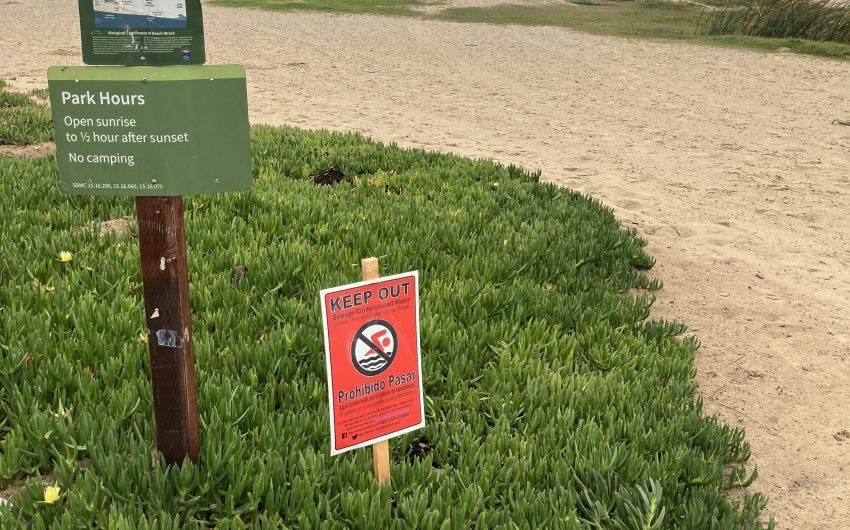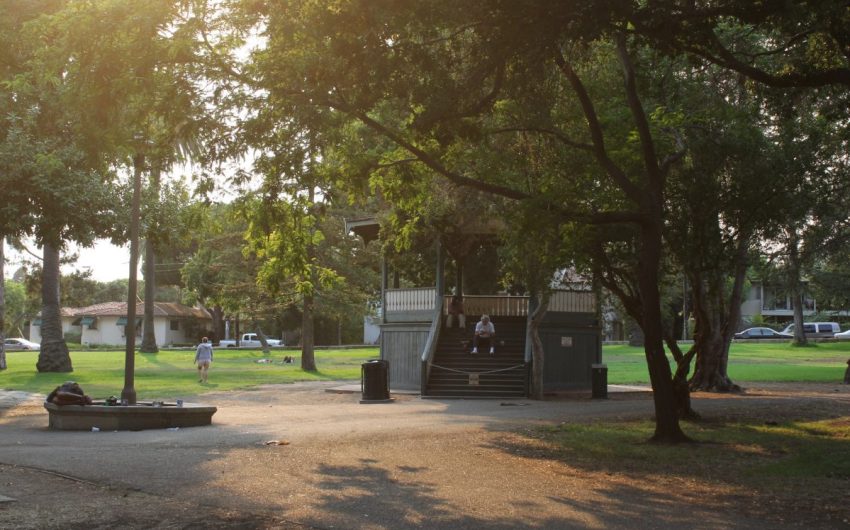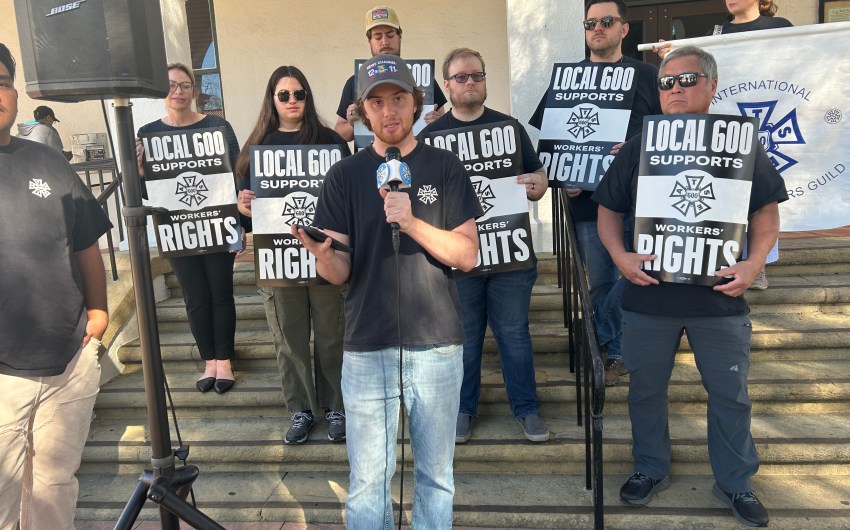When Congress announced it was slashing funding for crime victim services earlier this year, Santa Barbara County’s rape crisis centers questioned their ability to provide around-the-clock support for survivors of sexual assault, facing a more than $400,000 combined loss.
Fears sprouted from the nearly $700 million cut to funding for the Victims of Crime Act (VOCA) — the largest federal funding source for these programs — which could force victim service providers across the nation to lay off staff, reduce programs, or even close their doors entirely.
However, in response, California recently stitched together a $103 million tourniquet to prevent these vital programs from bleeding out — for now.
Governor Gavin Newsom allocated the one-time funds in the 2024 budget agreement, following pressure and protests from state advocates looking to shield victims of rape, domestic violence, and child abuse from the national cuts and crying, “Don’t balance the budget on the backs of survivors!”
The funding will help local services — like the North County Rape Crisis Center and Standing Together to End Sexual Assault (STESA) — answer crisis calls, provide shelter for those fleeing from violence, support children and make them feel safe during court cases, and so much more.
“But it’s like putting a Band-Aid on a gushing chest wound,” said Ann McCarty, executive director of the North County Rape Crisis Center.
The COVID-19 pandemic and rising costs of living have already strained resources and impacted staffing at both rape crisis centers.
“We are always looking far down the road, beyond the year we are currently operating in — it’s how we build budgets, how we plan raises, new hires, and programming,” McCarty explained.
“The Governor’s funding allows us to limp through this year, but what about 2025-26 and beyond?” she asked. “We can’t plan to ‘grow’ this year … but we, like most nonprofits, need to grow in staffing levels in order to keep up with the increasing demand for services.”
The one-time funding from the state helps today, she said, “but the future’s what’s scary.”
It is true that these issues come at a time when demand for services is up. In California, the significant shortfall in federal funds translates to a 40-50 percent reduction in victim assistance grants, despite an increase in violence rates across the state this year.
A coalition of nearly 400 victim service organizations used these statistics to rally the state to backfill federal losses, which, according to the California State Association of Counties, was the result of “insufficient annual deposits” to the Crime Victim Fund (which funds VOCA through federal criminal fines and penalties from white-collar cases), as well as “uncertainty about future receipts and the long-term stability of the VOCA fund.”
Thanks to the state’s temporary financial tourniquet, organizations in California’s rural communities will be able to keep their offices open, and others hope to reopen locations after losses prevented them from renewing their lease, according to the California VOCA Advocacy Alliance.
“This means that when survivors call a crisis hotline, there will be an advocate on the other end to answer,” the Advocacy Alliance said in a statement.
However, they added, “funding remains precarious and reductions will likely occur in the near future if federal funding does not rebound in this federal fiscal year, or without state support in the years ahead.”
While there may not be a single scapegoat for the reduction in criminal fines that support VOCA, data from the Transactional Records Access Clearinghouse (TRAC), a research data center affiliated with Syracuse University, shows that the Department of Justice’s prosecution of white-collar crime has steadily declined over the past decade, with 2022 reaching an all-time low since tracking began during the Reagan administration.
Legislators are now exploring other options to fund victim services. Two state bills were introduced at the beginning of this year — Assembly Bills 1956 and 2432 — to boost funding by respectively requiring the state to supplement reduced federal funding and create other revenue sources.
“The funding outlook is better since the governor signed the $103 million in one-time funding for this year,” STESA Executive Director Elsa Granados said. “Now it’s up to the federal government to fix VOCA. Our state coalition is probably going to take a breath, then we’ll start advocacy again for next year.”
Premier Events
Fri, Jan 23
5:00 PM
Santa Barbara
Divine I Am Retreat
Sun, Jan 25
11:00 AM
Santa Barbara
CANCELED – 18th Annual Santa Barbara Community Seed Swap – CANCELED
Thu, Jan 22
3:00 PM
Santa Barbara
Grand Opening at Ghirardelli Chocolate & Ice Cream
Thu, Jan 22
6:30 PM
Santa Barbara
Boogie for our Bodies
Sat, Jan 24
7:30 PM
Santa Barbara
Sweet Home Santa Barbara-The Doublewide Kings
Sat, Jan 24
7:30 PM
Santa Barbara
Billy F Gibbons and the BFG Band
Sun, Jan 25
11:00 AM
Santa Barbara
CANCELED – 18th Annual Santa Barbara Community Seed Swap – CANCELED
Mon, Jan 26
6:30 PM
Santa Barbara
Lucinda Lane Returns to SOhO
Tue, Jan 27
7:00 PM
Santa Barbara
CWC Docs: Pistachio Wars
Wed, Jan 28
5:30 PM
Santa Barbara
The Astonishing Tale of Ludmilla and Thad Welch
Fri, Jan 30
6:00 PM
Santa Barbara
Friday Night Supper Club at Tyler x Lieu Dit
Fri, Jan 30
7:00 PM
Santa Barbara
Folk Orchestra of Santa Barbara Medieval Concert – El Presidio Chapel
Fri, Jan 23 5:00 PM
Santa Barbara
Divine I Am Retreat
Sun, Jan 25 11:00 AM
Santa Barbara
CANCELED – 18th Annual Santa Barbara Community Seed Swap – CANCELED
Thu, Jan 22 3:00 PM
Santa Barbara
Grand Opening at Ghirardelli Chocolate & Ice Cream
Thu, Jan 22 6:30 PM
Santa Barbara
Boogie for our Bodies
Sat, Jan 24 7:30 PM
Santa Barbara
Sweet Home Santa Barbara-The Doublewide Kings
Sat, Jan 24 7:30 PM
Santa Barbara
Billy F Gibbons and the BFG Band
Sun, Jan 25 11:00 AM
Santa Barbara
CANCELED – 18th Annual Santa Barbara Community Seed Swap – CANCELED
Mon, Jan 26 6:30 PM
Santa Barbara
Lucinda Lane Returns to SOhO
Tue, Jan 27 7:00 PM
Santa Barbara
CWC Docs: Pistachio Wars
Wed, Jan 28 5:30 PM
Santa Barbara
The Astonishing Tale of Ludmilla and Thad Welch
Fri, Jan 30 6:00 PM
Santa Barbara
Friday Night Supper Club at Tyler x Lieu Dit
Fri, Jan 30 7:00 PM
Santa Barbara
























